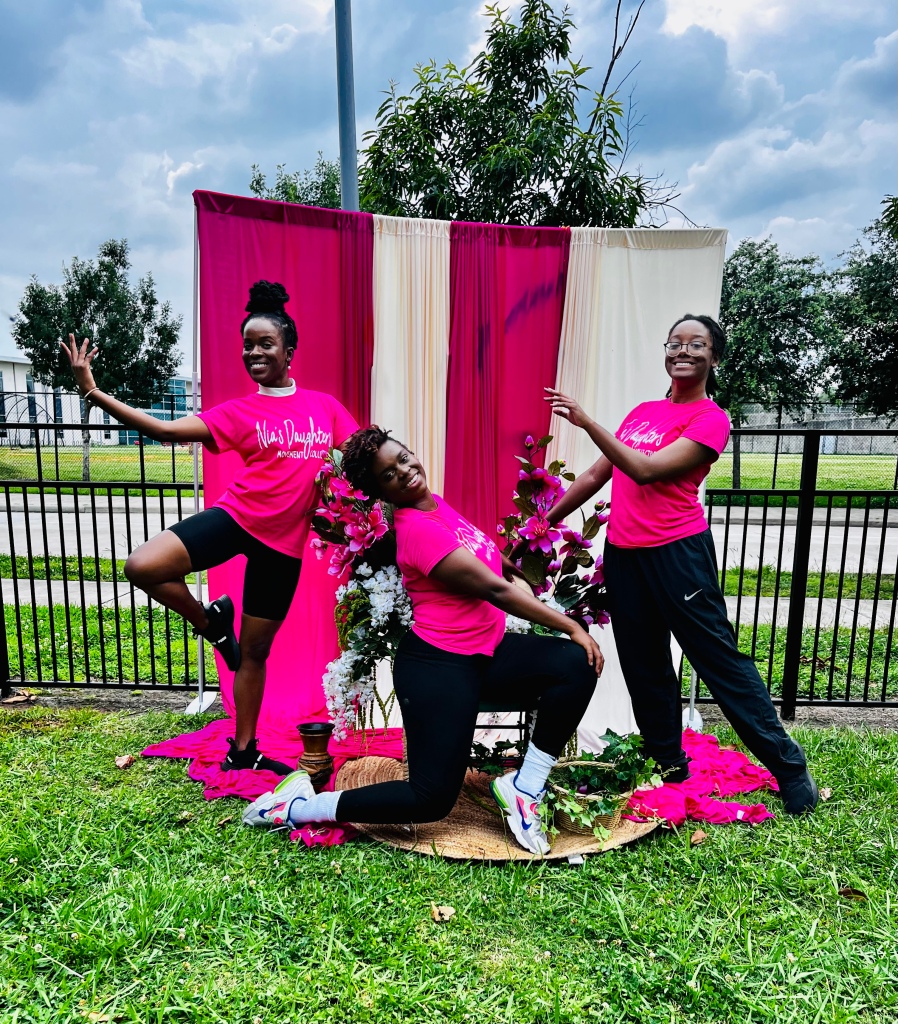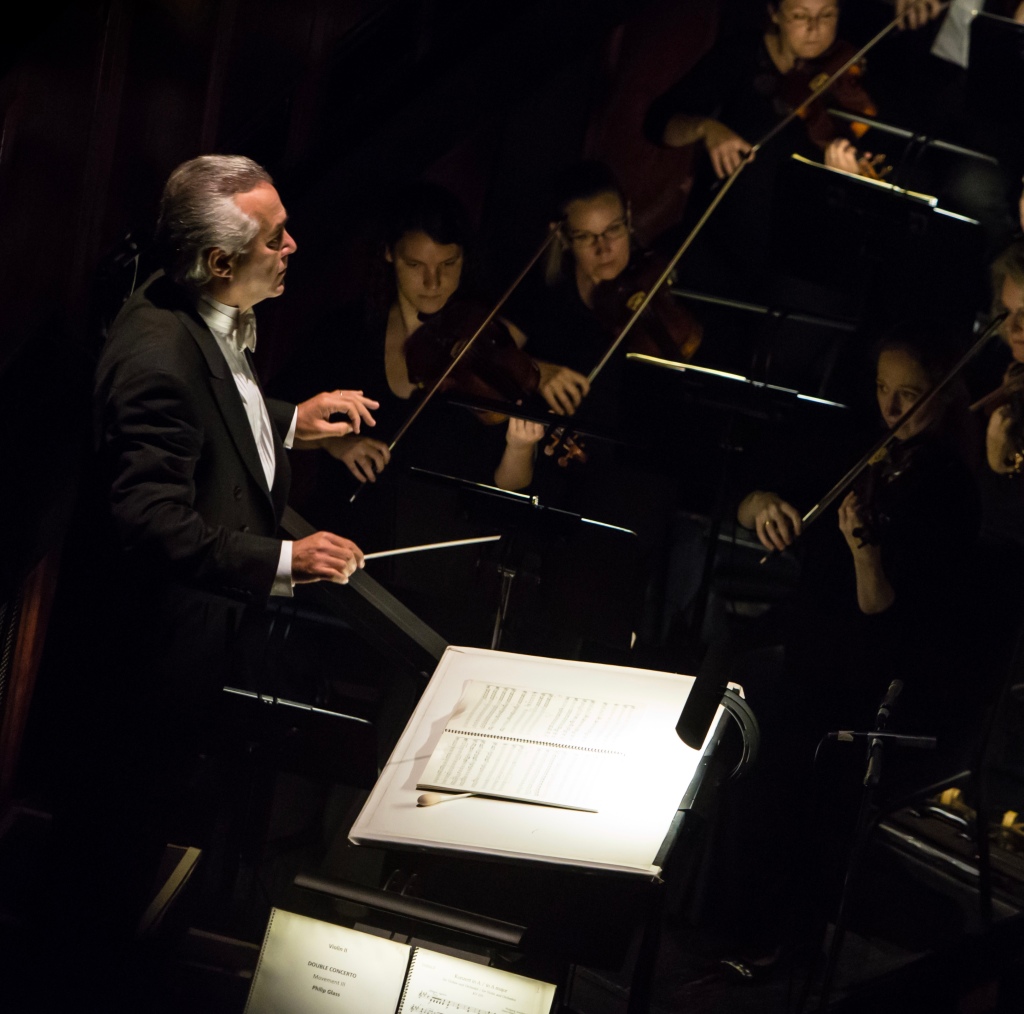
Nicole Kenley-Miller says that she’s most excited about the portrayal of the character Mabel, played by Julie Hoeltzel, in this summer’s production of Pirates of Penzance by the Gilbert and Sullivan Society of Houston.
“In other productions I have seen, she tends to be played as a cutesy, coquettish ingénue that is waiting around for a man to come and save her,” she said. “But that is simply not supported by the librettist’s text.”
In Pirates of Penzance, considered one of Gilbert and Sullivan’s funniest and most popular operettas, Mabel is the love interest of protagonist Frederic, who must serve out an apprenticeship to pirates until his 21st birthday—that is, until 21 of his Leap Year birthdays have passed, which extends his sentence by decades.
“Gilbert paints her as a fiery young woman who knows what she wants and who is not afraid to speak up and get it,” said Kenley-Miller. “From the beginning of my conception for the piece, I knew that Mabel was going to be the key to a new interpretation.”
This summer, Kenley-Miller becomes the second woman to direct the Gilbert and Sullivan Society of Houston in its 70-year history. Founded in 1952, the award-winning, Emmy-nominated company is considered to be the oldest continuously operating opera company in Houston.
A veteran director of opera and musical theater on stage and in film, Kenley-Miller received her DMA from the University of Houston and is Assistant Professor and Opera Stage Director at The University of Oklahoma. She is also the founder of Intersection Arts, an organization which explores the convergence of the arts and current social and cultural issues.

As stage director of Pirates of Penzance, which runs July 22-23 and July 29-30 at the Hobby Center, she succeeds British director and actor, Alistair Donkin, who served the company for 40 years as a beloved featured performer and choreographer, as well as stage director from 1985 until his retirement last summer.
Kenley-Miller’s appointment is part of a new chapter at the company, which also welcomes other changes this summer: renowned conductor Eiki Isomura, who leads Houston’s Opera in the Heights, takes the helm as Music Director; bass-baritone Joseph Rawley serves as Artistic Director, a new position responsible for conveying the company’s vision to the Board and providing long-term artistic continuity; and longtime company baritone Dennis Arrowsmith stars for the first time as Major-General Stanley, an iconic role previously sung by Donkin.
At a time when women remain underrepresented in American opera leadership positions—on average representing fewer than 30% of stage directors working in a season, according to an internal review by Opera America—this summer’s production of Pirates is also noteworthy for its female-driven production team. Led by Kenley-Miller, they include Jodi Bobrovsky (Set Designer), Riana Canetti-Rios (Lighting Designer), Shaun Heath and Mary Webber (Costume Designers), Lauren Pastorek (Choreographer), Debs Ramser (Stage Manager), Cathy Comeaux (Wig Stylist), Susie DeBlieck (Makeup Designer), Carolena Lara (Assistant Director Intern), and Sarah Roberts (Production Intern).
From portraying Mabel in a much stronger way than usual to dressing the character in late-Victorian hiking suits, Kenley-Miller says she hopes that the audience will see that the production aims to present the women of Pirates in a new light.

Houston Arts Journal reached out to Nicole Kenley-Miller for the following interview about her vision as a stage director and her production team’s interpretation of Pirates:
Houston Arts Journal: Throughout your career, you’ve “worked fluidly between the opera and music theatre genres,” as your bio says. How did your love of the performing arts begin?
Nicole Kenley-Miller: I grew up singing in school and church choirs. When I started my undergraduate degree, I was just planning to sing as a hobby while pursuing a pre-med degree. Even though I had never seen an opera, I decided to audition for the production my freshman year, and they cast me as Florence Pike in Benjamin Britten’s Albert Herring. The opera bug bit me, and I changed my major to Vocal Performance.
I went on to study at Eastman School of Music and then had a long career singing and teaching voice in the Houston area where I gradually became more interested in stage direction, because it offered more scope for the imagination. I started directing shows around Houston and ultimately got a doctorate in Opera and Directing at University of Houston. Each show I direct is a new world I get to step into and learn about. While I still sing, directing is now my main focus, and I have never looked back.
HAJ: Do you remember the first production you ever directed? What was that experience like? I’d love to hear a bit of the story behind that, in the spirit of getting to know you.
NKM: The first few productions I directed were for Lone Star College–Cy-Fair. I remember a production of Camelot we did there, which included an original set and costumes–a fairly significant amount of resource for a director who is just starting out. Usually at that point in one’s career, you have to make do with some black theatrical cubes and costumes from the actors’ closets. But I actually had the opportunity to collaborate on a design with their in-house set designer and a costume designer, who was the mother of one of the cast members. The conception and design of a show is a part of the process that I have come to love so much, because it allows me to create a world and imagine ways to tell these beloved stories through different lenses.

HAJ: You’re taking over as director of the Gilbert and Sullivan Society of Houston after 40 years of Alistair Donkin at the helm. What do you personally enjoy—or want people to know—about Gilbert and Sullivan’s work?
NKM: It has been such an honor to be the first director to open a new chapter for the Gilbert and Sullivan Society after Alistair’s long legacy with the company. I worked with Alistair Donkin and Robert Linder as a G&S chorister and understudy of Katisha in The Mikado when I was fresh out of undergraduate school in 1997, and I will always be grateful to them for their encouragement of me in the early stages of my career.
Gilbert & Sullivan is such great repertoire for young singers to get their start. It offers very accessible music and dialogue that draws on so many of the fundamental concepts of comedy that have been passed down over time. If a singer can do this kind of broad comedy, which is so dependent on good timing and understanding of how to use one’s body, they can pretty much do anything else on stage.
Many people don’t realize that Gilbert & Sullivan is a historical touchstone for much of our modern-day music theatre, and it has been a major influence on so many artists who write and perform on Broadway stages and in film today—Lin Manuel-Miranda, Andrew Lloyd Webber, Kelsey Grammer, to name a few.
HAJ: You happen to be only the 2nd woman to direct Houston’s Gilbert and Sullivan Society. The company tells me that previously Carolyn Franklin directed The Gondoliers in 1978. Because I know that you’re interested in the intersection of social/cultural issues and art, I wanted to ask how you view your opportunity to direct this production as a female director? What aspects of Gilbert and Sullivan’s work do you wish to bring out, which might have been overlooked—or could be reinterpreted?
NKM: It is such an honor to be the second woman to direct for the Society. As a woman in the male-dominated industry of stage directing, the particular lens I bring to every show cannot help but be influenced by my perspective as a woman. I have created and directed several pieces that are explicitly about a woman’s perspective, such as my recent work The Women Have Something to Say that opened off-Broadway in New York back in May.
While it’s not always possible to be as direct with these themes in more traditional operas, I find that I am constantly trying to reevaluate the female characters in a show by going back to the original text that the librettist wrote. With so many of these canonical works, the composers and librettists originally wrote the female characters in strong and dynamic ways, which have often been watered down or smoothed out by directors over decades of performance practice. I often find this with Mozart heroines, and it is equally an issue with historical interpretations of the women in Gilbert and Sullivan. I hope the audience will see that we are presenting the women’s roles in Pirates in a new light.
There is also an opportunity with G&S to bring out the original intent of their works, which was to poke fun at the very aristocratic class that had the means to attend their performances. Their works were originally a satirical commentary on the socio-economic inequities that existed in their day. Over time, this intent has been lost, so we’re trying to punch up those themes in this production of Pirates as well.

HAJ: Can you tell us about your take on Pirates—and, in particular, your “fresh spin” on the character Mabel?
NKM: I’m most excited about the portrayal of Mabel. In other productions I have seen, she tends to be played as a cutesy, coquettish ingénue that is waiting around for a man to come and save her. But that is simply not supported by the librettist’s text. Gilbert paints her as a fiery young woman who knows what she wants and who is not afraid to speak up and get it. From the beginning of my conception for the piece, I knew that Mabel was going to be the key to a new interpretation.
To amplify her character, I decided to update the piece from its usual 1870s setting to 1893, so that we could capitalize on the historical synchronicity of the burgeoning women’s suffrage movement in Britain. Moving to the late 19th century also allowed us to explore different costumes for the women. When we first meet them, they are hiking over the Cornish seaside cliffs, so this later setting allowed us to put them in late-Victorian hiking or cycling suits, and opened the door for Mabel to be in, [gasp], pants!
HAJ: This production seems to have a female-led creative team—not only yourself as a director, but a total of 11 women involved with producing this show (9 creative team artists and 2 interns). You shared with me that this is a “high percentage vs. the usual in the industry.” Can you give a little context to how this compares to the industry based on your personal experience of gender equity?
NKM: I am very proud of the large representation of women on our design and production team. While women are often behind the scenes in so many areas of opera and theatre, particularly in costume design, stage management, and dance, there are certain roles in the theatre which still have a glass ceiling for women—particularly the areas of stage direction, set design, and lighting design. Though I am happy to say that this is gradually changing in the opera industry, there is still work to be done, so I am proud to have this team of women playing such a central role in Pirates.
HAJ: As a follow up, what do you see as the significance or impact of having a female-driven production?
NKM: For me, the significance of a greater presence of women in leadership in opera is not about quotas and numbers, but rather in expanding and enriching the way we tell these stories. When women or any underrepresented group tell a story, we cannot help but bring our experience to the table. Because I’m a woman, I am automatically going to bring a more organic understanding of the female characters to the forefront in my interpretation. And that vision then allows the design and production team to follow suit within their specialties of sets, costumes, choreography, etc. Ultimately, I believe the art form will benefit by expanding the way we tell these stories so that they can speak to a wider range of audiences and attract a new generations of opera lovers.

HAJ: Lastly, this year’s Pirates also features new sets designed by Jodi Bobrovsky and new costumes by Shaun Heath and Mary Webber. Can you give us a sense of what they look like and how they complement your vision of this production?
NKM: I am so excited about the new designs that Jodi Bobrovsky, Shaun Heath, and Mary Webber have brought to the table. They are colorful and full of life. The costumes are always a central way in which we communicate the period of the piece. Shaun and Mary’s designs have allowed us to capture the late Victorian look that the setting calls for, but in an anachronistic color palette for this time period that reflects the exaggerated nature of Gilbert and Sullivan’s outrageous plots and comedy. And Jodi’s colorful set design inspired by British travel posters of the Cornish coast provides a vibrant backdrop to all the hilarity that will ensue in front of it.
It should be mentioned that we have new exciting choreography as well, created by Lauren Pastorek. There is so much movement in this production, and there will never be a dull moment. All of these women have been so integral to casting a new vision for this piece, and I have so much admiration for their expertise and long histories in the Houston opera and theatre scene.

























